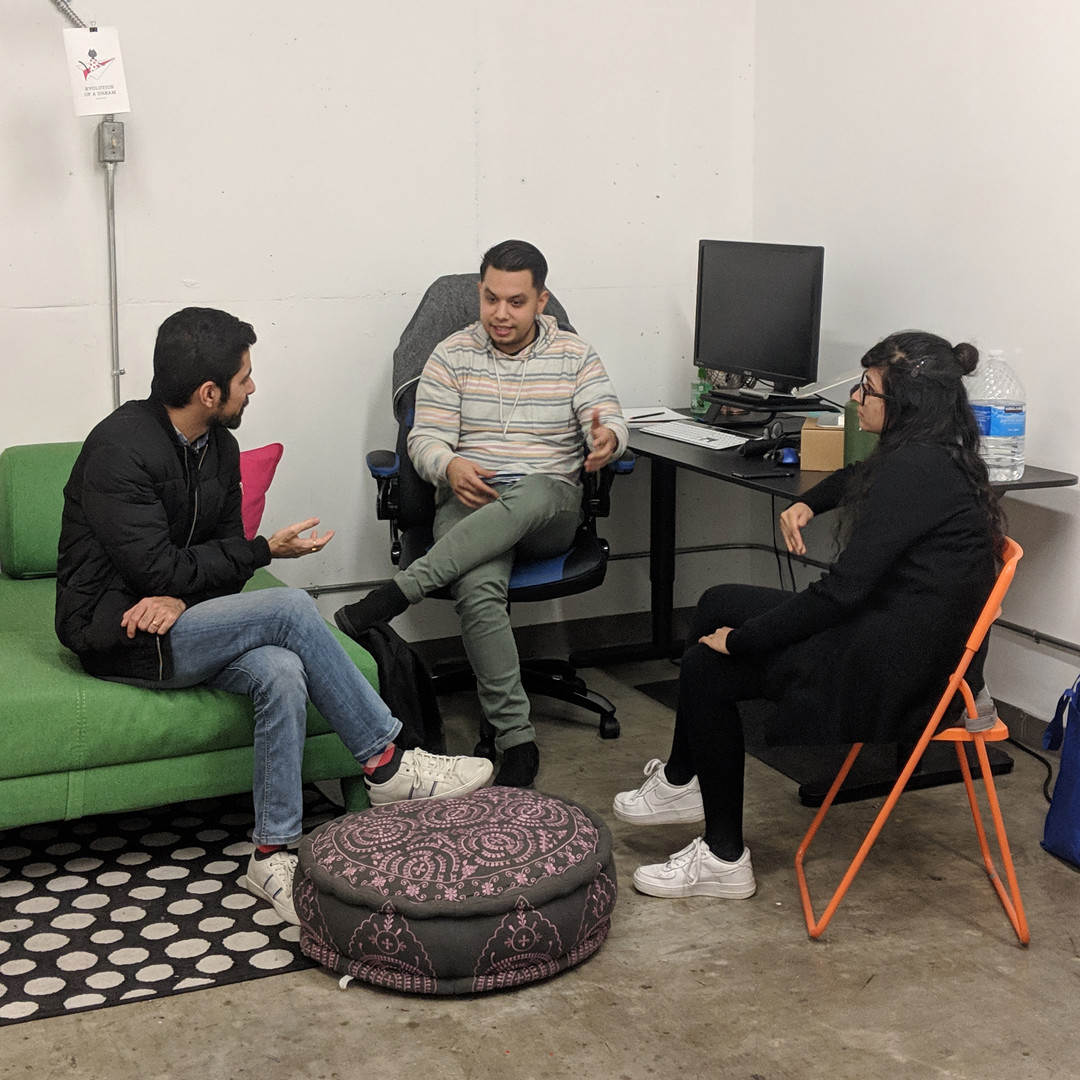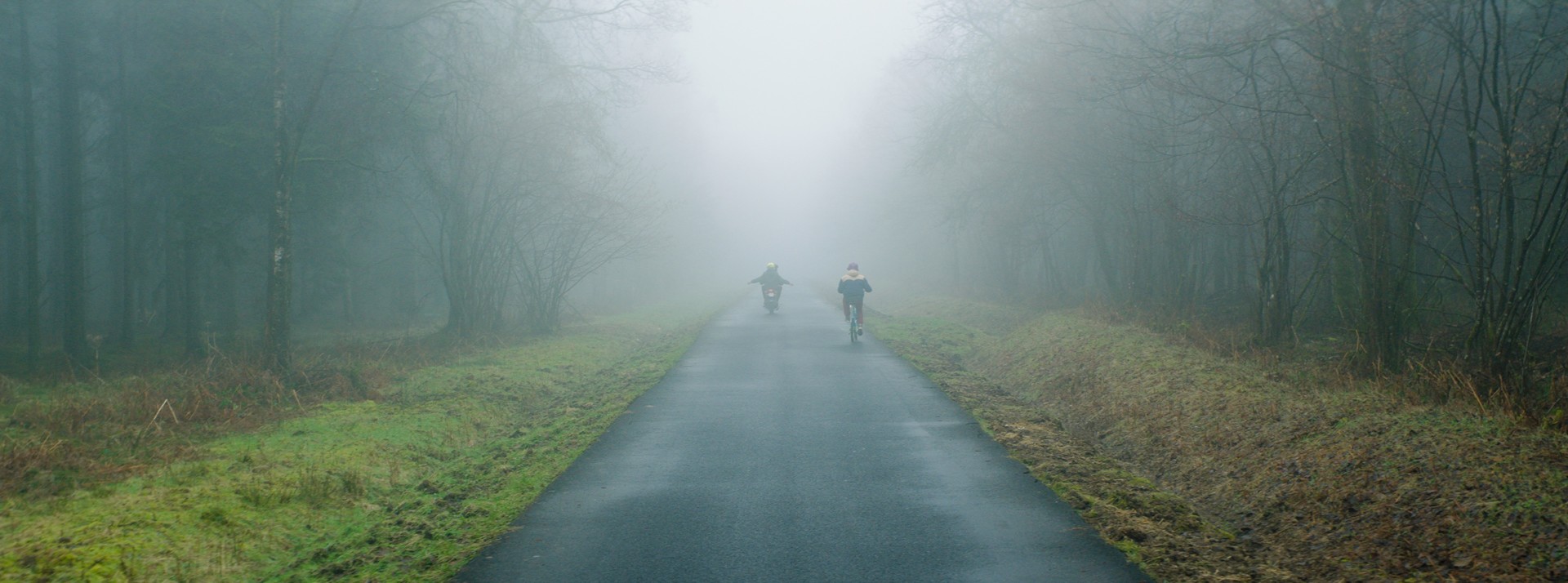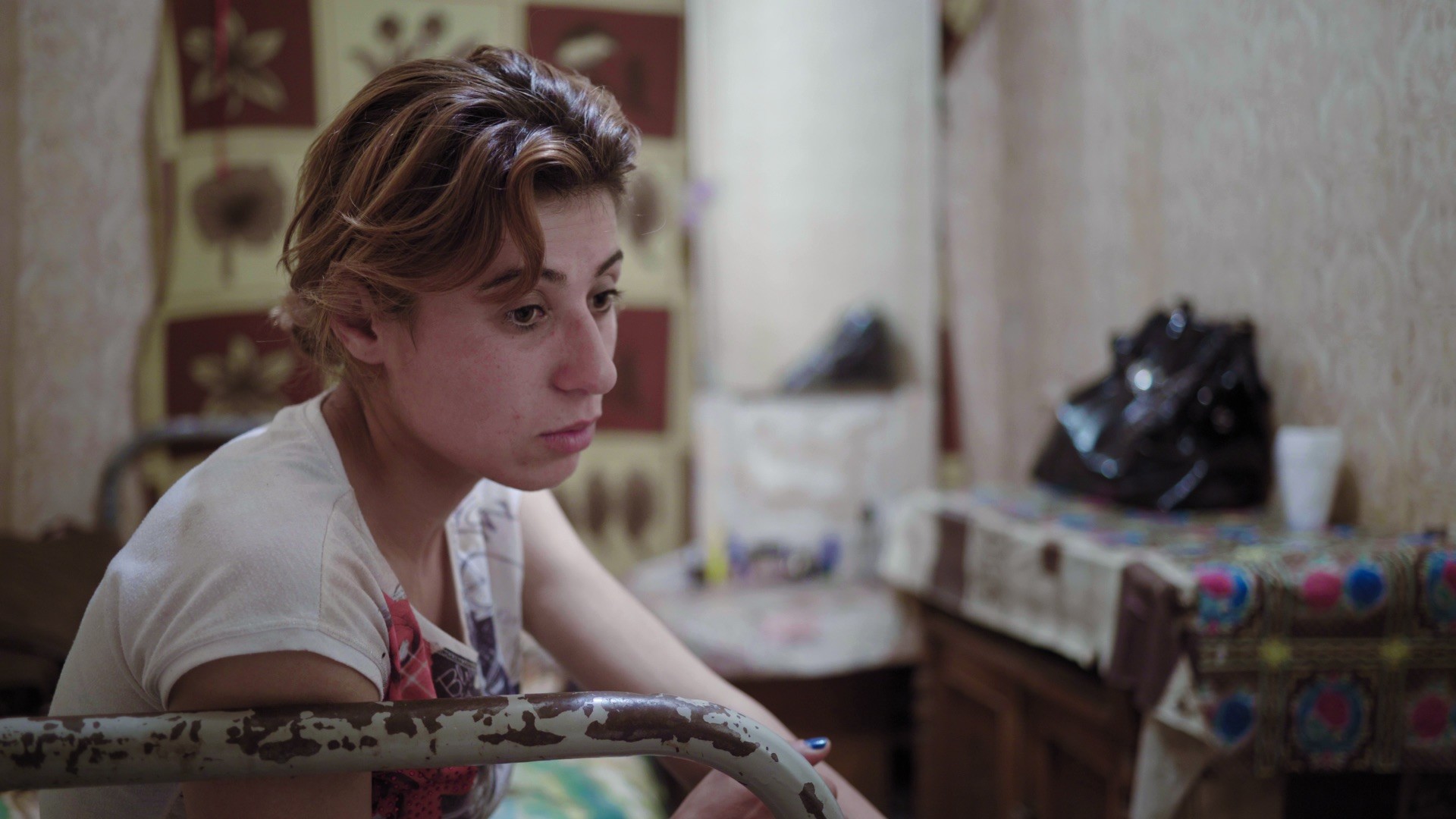This website uses cookies so that we can provide you with the best user experience possible. Cookie information is stored in your browser and performs functions such as recognising you when you return to our website and helping our team to understand which sections of the website you find most interesting and useful.
Discover the award-winning films of the 4th Copenhagen Film Festival nomination categories and learn more about all the inspiring filmmakers we featured this year.
Best Animated Film Winner
Passage
Finding herself in a state of limbo, an Indian woman revisits her immigration journey and voyages through a tempestuous emotional landscape of memory, identity, belonging and the illusion of the American Dream.
Asavari Kumar
Best Cinematographer Winner
Grit
Winner of 10 international film awards, Emmy nominated. An international drilling company Lapindo carelessly unleashes an unstoppable toxic mudflow into East Java—burying dozens of nearby villages and displacing tens of thousands of Indonesians in the process. Directors Cynthia Wade (Academy Award® winner) and award-winning director Sasha Friedlander focus the tragedy around 16-year-old Dian, a survivor who is routinely ignored by her government, despite the unforgiving sludge continuing to engulf her home for over a decade. Chronicling the teenager’s transformation from a young girl into an outspoken advocate for her community, GRIT is a timely showcase of the urgent need for political activism, the duty to hold those in power accountable, and the perseverance of the human spirit amidst social and environmental strife.
Cynthia Wade, Sasha Friedlander
Best Danish Film Winner
Postludium
Joachim has come to take care of his self-destructive and suicidal father Ulrich, who lives on the countryside. They have not spoken nor seen each other for several years. It’s a story about family and betrayal. They will both have to let go of their failure, shame and guilt to move on, even though the outcome might be hard.
Svend Colding
Best Director Winner
As Up to Now
Hope is what brings us forward. All the characters in the movie – the main character Margit, and her daughter Judit- become part of a hope giving lie. Margit suffers from a serious skin cancer, but her daughter arranges that her mother be treated. She goes to the treatments alone, and her life become more active and the relationship with her daughter seems to get better.
Katalin Moldovai
Best Documentary (Student) Winner
Remote
Fascinated by remote, isolated places and why people live there, I set off to Bardsey Island; home to just 4 permanent residents.
Edouard Paquet
Best Documentary Director Winner
Mothers Of
El Salvador has some of the most extreme anti-abortion laws in the world. It is one of a handful of countries in the world where abortion is banned under all circumstances, including cases of rape and when a pregnancy poses a clinically verifiable risk to a woman’s health. As an extreme consequence of the law, women who have naturally occurring obstetric emergencies are routinely imprisoned on homicide charges. When they seek emergency care after miscarriages or stillbirths, doctors report them to the police on the suspicion of having an abortion. Between 2000 and 2011, 129 women in El Salvador were prosecuted for abortion or homicide when the fetal deaths occurred in the last months of pregnancy. 'Mothers of' explores the hyper-strict abortion regulations in El Salvador through the story of Teodora del Carmen Vásquez, a woman forced to serve over 10 years in jail after suffering a stillbirth in her 9th month of pregnancy. Through Teodora’s perspective, we begin to understand how loss and motherhood are felt in the face of bitter social injustice.
Ross Lai
Best Editor Winner
Pollux
No summer camp this year for 13-year-old Vivian and Max because of the imminent closure of the factory where their parents are working. But Vivian has a plan to make money and allow them to go to the camp anyway. Accompanied by Tom, their childhood friend, they will run into a race against time.
Michael Dichter
Best Experimental Winner
Heron – Fragrance of Violence
The short art film HÉRON consists of three storylines / events that are displayed in parallel throughout the film. The first part of the film was filmed in the forests of Småland in Sweden. The doll house, playing a central role in many scenes, is built to be a copy of a stout house in Småland in the years of 1700-1800. During this period there was famine and poverty in Sweden, especially in the regions of Småland. This led to a massive emigration to America. Letters from the emigrants told stories depicting a land of possibilities, religious diversity and political freedom. I relate to this because my family emigrated from Finland to Sweden, and I use this experience and transform it into art. Unfortunatly the original house in Småland, including all the furniture, declined and had to be torn down to build new housing. But the doll house and the miniatyre furniture still exists, and have been documented in Héron – fragrance of violence. The other two parts were shot partly in Ramnäs, a large burnt down forest outside of Sala in Sweden, and in a green screen studio that we set up at Cité International des Arts in Paris. The material is combined in an experimental way / process; the different parts of the film coexist simultaneously and together they carry new meaning – through the variation of images and sounddesign when juxtaposed. The purpose was to create an 'automatic' art, developing the material directly from the subconscious, without being filtered through reason, morality or aesthetics. We played with the so- called 'automism' – a kind of random stream of inner images. In Paris we added elements not originally in the script, strong colors and new props; large bird heads and a blonde doll-woman. Me and David Nord shot and developed the new story threads in the green screen studio (we spent 2 month there). The “Doll shots” were inserted into the doll house that we filmed in Småland. I play all the grown-up characters in the film, and the children we shot in the forest are played by Siri Sutinen, Illyan Sutinen and Elvin Kander. Daniel Bingert composed the music for the film, David Nord did the sound design in collaboration with me. Editing, compositing and postproduction was done by David Nord. The main inspiration for the film derives from my childhood summer place in Majkkala järvi in Finland.
Natalie Sutinen
Best Feature Documentary Winner
Fashion Victims
Tamil Nadu, Southern India. Millions of adolescents and young women work in the textile industry, from the cotton weaving to the production of ready-to-wear garments, for both the local and the international market. They often come from poor and rural areas, where there are no income alternatives neither for them nor for their families, especially given the constant and persistent decline of agriculture. It is in these villages that the “brokers”, acting as intermediaries between the companies in need of a sizable and docile workforce, and a local population ever more desperate, every year recruit hundreds of thousands of girls. The girls are taken to the companies, where, besides working, they will also be living in factory hostels, although often they – nor their families and even some brokers – are not aware of this. They are enrolled through so called recruitment and exploitation schemes; one of the most known is the ‘Sumangali scheme’. Under the scheme, the girls must work between three and five years: exhausting shifts, up to twenty hours a day, in dangerous conditions, they are deprived of the freedom of movement and to communicate with the outside world, and they do not receive a monthly salary, but only a very small amount of money for their daily needs. At the end of the stated period of work, they should receive the cumulative payment of what they have earned over the years – between five hundred and eight hundred euro. They dream of being able to use that money as a dowry for their wedding. Instead, what often happens are work accidents, missed payments, escapes, suicides, sexual violence, and even murders. The girls themselves, by narrating their past and their future, draw a picture of the daily cruelty of a production system in which the first fashion victims are they themselves, violated in the body and in their dreams, to produce what we wear everyday.
Alessandro Brasile
Best Foreign Documentary Winner
The New Hospital
Innovation and scientific discoveries are rapidly changing our healthcare system. Rejuvenation, robotization, genetic alteration and organ cultivation will change our society forever. But to what extent can we engineer our own bodies? In the documentary ‘The new hospital’, we experience these dilemmas through several characters that work at the Erasmus University Hospital and who are confronted with these questions every day. After 18 years of renovation, the new Erasmus MC will open its doors. But how do you create a future proof hospital?
Marleine van der Werf
Best Music Score Winner
Shallow Water Blackout aka The Vegan Toothbrush
As residential cruise vessel The World sails by the pristine, Arctic archipelago of Lofoten, climate revolutionary children Amelia and Steven hijack the ship as part of their scheme to rid society of what they consider a threat worse than global warming: ignorant adults. In Shallow Water Blackout aka The Vegan Toothbrush the by now familiar arguments from the climate debate are growing increasingly hollow, as CO2 utopians, the religious, the sceptics and the denialists, warriors and eco liberals, are all at grave risk of ending up dead at the ocean floor as the children take over The World. The film looks into the various camps of the climate debate – and their typical slogans. We meet among others a PR executive from lobby organisation The Heartland Institute, a green-washed tourist guide, and 14-year old Amelia who speaks exclusively in Greta Thunberg quotes.
Trygve Luktvasslimo
Best Music Video Winner
Mono No Aware
Often considered to be untranslatable, the Japanese term MONO NO AWARE refers to the bittersweet realization of the ephemeral nature of all things. It is the awareness that everything in existence is temporary. The fleetingness of youth, the fading of romance, and the changing of seasons are not to be mourned, but cherished and appreciated in their impermanence, for that is where their beauty comes from. This art video is made in collaboration between the music collective C'mon Tigre and the artist Maurizio Anzeri, animating the Anzeri original artworks to tell a story of the beauty of ephemeral human beings life, flying over places like a bird, observing people who live in those places in a dimension where history and future converge. Maurizio Anzeri makes his portraits by drawing on tracing paper, which he laid on top of old photographs, and after by sewing directly into the photographs. His embroidered patterns garnish the figures like elaborate costumes, but also suggest a psychological aura, as if revealing the person’s thoughts or feelings. The antique appearance of the photographs is often at odds with the sharp lines and silky shimmer of the threads.The artist’s recent expansion of his practice to include landscapes stems from an interest in the idea of ‘electricity’: electricity that we emanate and absorb and its manifestations. In his altered landscapes, mysterious emanations suggest unseen phenomena, and allude to the spiritual and mystical.
Marco Molinelli
Best Producer Winner
Clay
20-something year old Agnes, seeks independence in traveling to Iceland on her own. With a promising job as an au pair for two twin girls, she seems to have found the perfect base for her search in personal reinvention. But once arriving, Agnes quickly meets a darker truth as she is thrown into a world of distress, with a mother fully embodying the word ‘abuse’.Henceforth, she is forced to take action in a desperate attempt to sort out the situation – whilst not being completely sorted out herself.
Leonard Rääf
Best Screenplay Winner
Caroline Buxton's Lipstick Posse
Trying to forge new destinies beyond their backwater town, an offbeat housewife and her cosmetic peddlers embark in door-to-door sales, under the nose of her authoritative husband.
Best Short Documentary Winner
Motherland
What if fighting for your country meant going against some of its most traditional values? Motherland is a documentary about the women who shake tradition to rid their country of landmines leftover from a devastating ethnic war. Individually outcast; together, a collective – the deminers support each other as they take on the dangerous role of breaking stereotypes and securing the future of their war-torn republic.
Emily Mkrtichian, Jesse Soursourian
Best Short Film Winner
Pollux
No summer camp this year for 13-year-old Vivian and Max because of the imminent closure of the factory where their parents are working. But Vivian has a plan to make money and allow them to go to the camp anyway. Accompanied by Tom, their childhood friend, they will run into a race against time.
Michael Dichter
Humanitarian Award Winner
Under the Lemon Tree
In this documentary, we spend a day under the shade of a lemon tree with a Palestinian woman named Khaldieh who was abruptly exiled from her hometown of Tulkarem in the year 1967. Preparing herself a humble breakfast of za’tar and inhaling the smell of sage, she recreates her homeland through an assemblage of simple elements.Though they may seem trivial, for many Palestinians they are among the only tangible pieces of their lost homeland that they still possess. She retreats into her memories of her early life in Palestine and, taking the viewer with her, gives voice to her deep longing for her land and home and reminiscences on the hardships of exile, the things she experienced, witnessed and lost. She unfolds the trauma of her sudden expulsion from the town she and all her ancestors grew up in. Holding onto a mere key to their home, she shares with us the pain of leaving her house for the last time, which she relates to her constant dreams of return.
Noor Alasswad


















